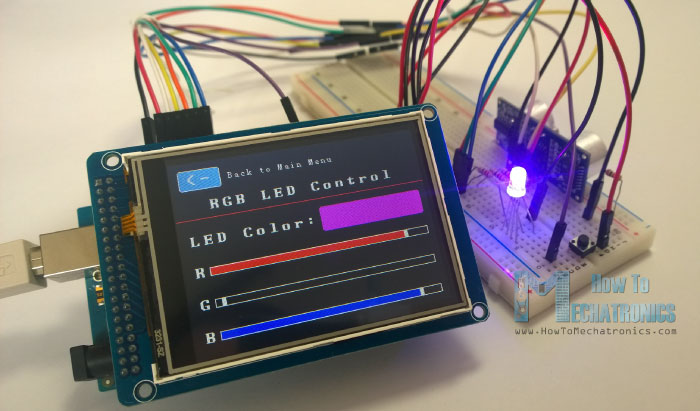

Bend the pin flat and away from the connector as per the picture above. Identify pin 19 (LED_A) and carefully remove a few millimeters of the plastic at the base of the pin.

(b) Remove the TFT Display, and place it on a firm surface. Add a 270k Ohm Resistor to A7 of the Arduino as per the circuit diagram.

Solder two wires on the inside of the case and connect them as per the circuit diagram. Use hot glue on the inside of the cabinet to hold the legs in place. Drill two 3mm holes in the case and push the LDR legs through the holes. (a) To achieve this a Light Dependent Resistor (LDR) is positioned at the back of the unit to detect the light. I wanted to do this with minimal damage to pins or tracks on the components so took the following approach. This means we have to disconnect it and reconnect to a PWM pin on the Arduino to control the Backlight brightness. (If not then you can skip this step!) Unfortunately, the backlight in the TFT screen is hard-wired into +3.3v and cannot be adjusted with the Arduino. If you intend on using as a bedside clock, then you will likely want to automatically dim the backlight at night so it doesn’t affect your sleep. The Sound Module is triggered by D8 on the Arduino, so this and the power supply need connecting as per the circuit diagram provided. In a similar fashion as above, use foam and hot glue to position the module and the speaker on the back of the Arduino taking care to ensure they are insulated from touching. In my case, I soldered 2 of the RTC legs directly to the Arduino and used hookup wire to connect 5v and GND to the Arduino. I used a hot glue gun and packing foam to ensure they are not touching and there is some cushioning to absorb movement. Mount the Realtime clock on the back of the Arduino Mega as in the picture provided. The overall circuit contains a Real Time Clock, Arduino Mega, Sound Module, Touch Screen and a Screen Sheild. All of the 3D print files and instructions for the case can be found here on Thingiverse Step 3: Build the Circuit I printed the clock case on a Creality Ender 3. Optional Auto Back Light Dimming Components only required if a Bedside Clock USB Cable 2m length USB charger (used for the power supply for the clock).Two Part Epoxy Resin for gluing case together.Voice Recorder Module – ISD1820 Voice Recorder.Touch Screen – 3.2″ TFT LCD Display + Touch Screen for Arduino’s Mega 2560.Touch Screen Arduino Shield – 3.2 inch Mega Touch LCD Expansion Board Shield.Arduino Board – Arduino Mega 2560 (Items 1, 2 and 3 can be purchased as one bundled order).Many thanks !! Step 1: Gather the Materials ** If you like this instructable please vote for it in the “Clocks Contest” by pushing the button at the bottom of the page *** Lots of fun to build and a great gift for anyone who likes to relive the nostalgia of 80s arcade game characters Tumble Ghost – Animated Pacman Ghost game based on Flappy Bird DK Clock – Interactive Animated DK game with clock functionsĤ. Pacman Clock – Interactive Animated Pacman game with clock functionsģ. Arcade Clock – DK Mario, Space Invaders & Pacman animationĢ.


 0 kommentar(er)
0 kommentar(er)
